44 Amazing Animal & Insect Facts For Kids in 2024
We have a fantastic set of cool facts all about animals for you.
Discover some amazing facts about the following animals and insects below! You can go to each animal page using the links and also read a short description of each animal.
Also check out some of the names for groups of animals.

Let’s get started with our cool animal facts below.
Alligators

An alligator large carnivorous reptile that lives in water most of the time. It has a wide head with a long, rounded snout.
It is extremely aggressive when hungry and has been known to grab and kill large mammals on shore.
It will drag the animal into the water and drown it before devouring it in pieces.
Alpacas
The alpaca is a mammal that is now raised in the Andes in Peru, Bolivia, Ecuador and northern China.
Many farmers in North America have herds of alpaca. It is now a domesticated mammal raised for its coat.
They are related to a llama, but they are smaller and not raised to be pack or work animals.
Anacondas
The anaconda is the largest constrictor snake in the world.
Green anacondas can grow to be more than 30 feet and weigh over 500 pounds.
They live in swamps in the rainforests of the Amazon and Orinoco rivers in South America.
Because their eyes and nose slits are on the top of their head, they can lay in wait for prey while almost completely submerged and invisible.
Bald Eagles
Bald eagles are native to North America and are found in deserts, forests, and coastal areas. Their heads are covered with white feathers.
Their eyes, legs and feet are yellow, and they have a large, yellow hooked bill. They can have a wingspan of 7 feet or more.
If they can pick it up in their talons, they will kill and eat it, such as fish, water birds, and small mammals.
Bats
There are over 1000 species of bats, some tiny and some weighing 2 pounds. They are nocturnal mammals and fly using eco-location.
Most species eat flying insects, especially mosquitos and gnats. They congregate dark places like caves where they hang upside down.
They are the only mammals that can fly. Each ‘wing’ is made up of 4 long fingers and a thumb connected by a thin skin.
Birds

There are approximately 10,000 species of birds in the world. Each type of bird has its own peculiarities, colouring, beak formation, ways of eating and nesting.
Some species migrate yearly because of weather changes and some remain in their habitat their entire life.
Some are seed eaters, some are fruit eaters, some are carnivorous, and others are carrion eaters.
Some have wings and fly while others have wings and cannot fly.
Bobcats

The bobcat has many names depending on where they are found, such as cougar, puma, and panther, and about 35 other names.
But they are all members of the same species. They have long, slender bodies, very flexible spines, round heads, erect ears and are usually a shade of brown, reddish-brown or tan.
Bobcats are carnivorous and use their speed to capture prey. They have large paws with retractable claws. A male bobcat can be 5 feet long with a 3-foot tail.
Camels

Camels have been domesticated for thousands of years and are kept as livestock. They provide their keepers with milk, meat, and hair that is made into felt and a means of travel and transporting cargo.
Camels are especially adapted to living in the desert as they can go a long time without water. There are 3 main types of camel: the Bactrian (two humps), the Dromedary (one hump), and the wild Bactrian.
Cats

Cats have been domesticated for thousands of years. They were commonly kept by the rich in Ancient Egypt and Ancient China and were considered to bring good luck to the household.
Cats love dark, small places and are never claustrophobic. They feel safer when they are hidden in tight places. This is a throwback to their wild ancestors, when their lives were always threatened.
Cheetahs

The cheetah is a large, wild, carnivorous cat native to Africa and Iran. It is the fastest land animal in the world. It is highly adapted to be fast with its long thin body and legs and long tail.
They can reach speeds of 50 to 80 mph. They are typically a tawny color with black spots. Their spotted coat gives them good camouflage.
They prey on impalas, springboks, and gazelles, which they kill by outrunning them and attacking the prey’s throat.
Chickens

Chickens are the most abundant of domesticated birds and are raised today for meat and eggs. They live together in flocks.
The male is called a rooster and is distinguished from the female hen by a larger, bright red comb (a crest on the head), and red wattles (hanging skin under their beaks).
Roosters have more colorful plumage than hens, as well as long tail feathers.
Chimpanzees

The chimpanzee is native to Africa. They are covered with black hair but have bare faces, fingers, toes, hand palms and the soles of their feet.
Adult males weigh between 88 and 154 pounds, and adult females weigh between 60 and 110 pounds.
Infant chimpanzees are suckled by their mother for about 3 years but stay close to its mother for several years after weaning.
They live in groups dominated by one male.
Cows

Cows have been domesticated for thousands of years and they are the most abundant large animal raised for meat or milk production.
A cow is a ruminant (cud chewer) with one stomach divided into four compartments.
The males of the species are most often castrated by the age of 6 months and raised and slaughtered for meat and the hides are tanned for leather.
Where the human population is made up of nomzads, cattle dung is used for fuel for cooking fires.
Crocodiles

Crocodiles can be found in the tropics of every continent. They are semiaquatic reptiles and can be found in salt or fresh water.
They have special salt glands that filter out the salt. One way to distinguish an alligator from a crocodile is that a crocodile has a large tooth in the lower jaw which can be seen when its mouth is closed.
They are extremely fast on land and aggressive.
Deers

Deer can be found in all continents except Antarctica and Australia. The species include red deer, fallow deer, chital, caribou, roe deer, mule deer, and moose.
All deer, female and male, shed their antlers each year. The only exception is the Chinese water deer.
There are deer that have developed to live in mountains, grasslands, swamp, wet savannahs, and the outskirts of deserts.
Deer are ruminants (cud chewers) and are excellent swimmers and jumpers.
Dogs

All modern dogs can trace their lineage to the wolf. Domestic dogs have been bred selectively for thousands of years to produce certain dogs with certain physical traits, sizes, and behaviors.
Dogs have been trained to have many roles. German Shepherds Teacup Pomeranians are one of the most popular dogs.
They can be great companions, as well as trained for occupations such as herding, hunting, guarding, to pull loads, to be a service or guide dog, to perform search & rescue, and drug detection.
Some dogs can be trained to detect the onset of seizures for their human companions.
Dolphins

Most species of dolphins prefer the warm waters of the tropics. They live in groups called a school or a pod.
They are mammals that breathe air, and give birth to live young.
They nurse their young (calves) for a long time and only produce a calf every 2 or 3 years. They communicate with others in their pod by a variety of clicks and whistles.
Dolphins and porpoises do not belong to the same species of mammals.
Donkeys

The donkey is a member of the horse family. They first appeared in Egypt and Mesopotamia about 3000 years ago.
The donkey or ass has been domesticated and used as a working or pack animal. The male donkey is called a jack and the female is called a jenny.
If a jenny is mated with a stallion horse, the offspring is called a hinny.
There could be more than 40 million donkeys in the world, and most can be found in underdeveloped countries.
Ducks

Ducks are waterfowl that includes swans and geese. They eat a variety of food – grasses, fish, insects, small amphibians, small molluscs, and worms.
Dabbling ducks feed on land or on the surface of the water. Diving ducks and sea ducks find food underwater.
Mergansers are divers that catch and swallow fish.
Some species have wide flat beaks that are used to dredge the bottom of rivers and ponds to unearth worms and insect larvae
Eagles

Eagles are beautiful, majestic birds at the top of the food chain. They are large and very powerful predatory birds with huge hooked beaks that are very useful for tearing flesh from their prey.
Eagles have muscular legs and strong talons and can even prey on relatively large animals like monkeys.
Elephants

Elephants are the largest land animals in the world. There are three species: the African bush elephant, the African forest elephant, and the Asian elephant.
The African elephant have large ears and backs that are concave, whereas the Asian elephant has smaller ears and straight or convex backs.
They use their trunk to breathe, handle food and water, and to grasp things.
Fishes

There are more than 30,000 species of fish. All live in water, have gills, and 99% of them have fins.
They are found in almost every body of water in every corner of the earth. Fish are and have always been an important source of food for humans.
Today there are wild fisheries to propagate lakes and streams and fish farms to raise fish for food.
Flamingos

Flamingos are long legged wading birds found throughout the Americas, the Caribbean, Africa, Asia, and Europe.
They are very social birds and live their lives in colonies.
They have a unique bill that is upside down. They use it to stir up the mud on the bottom, and use their rough tongue and hairy structures inside the mandibles to filter out the water and mud leaving the insects and larvae.
The pink color in the plumage comes from their diet.
Frogs & Toads

Frogs and toads are tailless amphibians that are mostly carnivorous.
They have a stout body, protruding eyes and a tongue that is attached at the back of their throat which they can flick out with amazing speed to catch their prey.
Their powerful legs fold under their body when they are sitting still.
They are excellent swimmers. Most frogs and toads lay their eggs in water. When the eggs hatch, the young are called tadpoles.
LEARN MORE ABOUT FROGS & TOADS
Green Basilisk Lizard
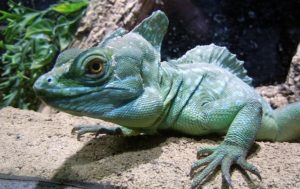
The Basilisk lizard is native to the Central and South American rainforests. It lives near water. They generally have a brown, olive or tan body.
The male of the species has a crest along its back and on its head and tail. They have a pale stripe on the upper lip and another on each of its sides.
If frightened, it will walk on water by spreading its toes to expose fringes. This increases the size of their feet.
LEARN MORE ABOUT GREEN BASILISK LIZARD
Giraffes

Giraffes are the tallest land mammal in the world. They live in the savannahs and forests of Africa. They have an extremely long neck and legs.
Two little horns protrude on the top of a giraffe’s head. They have a distinct pattern of brown, non-circular spots all over its body.
They gather in herds of females and calves, and in herds of adult males. They are prey to lions, leopards, and hyenas.
Glass Frogs

Glass frogs are amphibians that dwell in trees that are close to water.
They are green in color and have skin that is translucent and the inner organs or viscera can be seen, hence the name ‘glass’.
They differ from other tree frogs because their eyes face forward instead of facing to the side. The eggs of glass frogs are laid on the leaves of tree branches that overhang water.
Gorillas
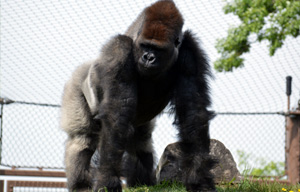
Gorillas’ DNA is the closest to humans after chimpanzees. Gorillas can be found in the rain forests of Africa.
They are ground dwellers that live in family groups. Eastern gorillas are darker in colour than the western gorillas and the mountain gorillas have the darkest and thickest coats.
Gorillas move around by knuckle-walking, but will walk upright for short distances if they are carrying food or if they feel threatened.
Each individual has unique fingerprints, just like humans.
Hamsters

Hamsters are rodents. There are 19 different species of hamster. During the 20th century, they became popular as small pets.
There are 3 species of dwarf hamster – Campbell’s, winter white, and Roborovski. Wild hamsters stay underground during the day to hide from predators.
They feed on seeds, fruit, and various types of ground vegetation.
They have cheek pouches that they pack with food to take back to their hidden burrows.
Hares

Hares are members of the rabbit family and are native to Africa, North America and Eurasia.
Like rabbits and jackrabbits, hares are herbivores. They have much longer ears than a rabbit and powerful back legs.
They generally live a solitary life or in pairs. Rabbits are born blind and helpless and suckle their mother for some time.
However, hares can fend for themselves shortly after they are born.
Hedgehogs

Hedgehogs are a small spiny mammal that is distantly related to shrews. They are native to parts of Europe, Asia, and Africa.
There are no hedgehogs that are native to New Zealand or the Americas but have been introduced to those areas.
For self-defence, they roll into a ball and tuck their heads and feet in so that all the spines are pointing outward.
They spend most of the day sleeping under bushes, grasses, rocks, or in dens in the ground. Some hedgehogs hibernate, but not all.
Hippopotamus

The hippopotamus is a semiaquatic mammal that is native to the tropics of Africa. They live in family groups in rivers, lakes, and swamps.
There could be as many as 30 females and young hippos in one group led by a dominant male. They stay cool in water during the day but will emerge on land at night to forage.
They are a most dangerous animal due to its unpredictable nature. Hippos have a barrel-shaped body with short legs.
Remarkably, they can run at 30 mph on land.
JELLYFISH

Jellyfish live in warm or cold oceans and seas. They are invertebrates that is they have no backbones. They have a smooth, balloon-like body with tentacles hanging below.
In order to move, they squirt water from their mouth. The tentacles have tiny stinging cells which stun or paralyze their prey.
Their sting can be very painful to humans when humans accidentally touch a tentacle. A sting from some species of jellyfish can be deadly to humans.
Kangaroos

Kangaroos are indigenous to Australia and New Guinea. They are the only large mammal that moves by hopping. They are marsupials (having a pouch).
A new-born joey is ‘born’ twice. It first emerges from the female’s body as a tiny animal as big as a lima bean, finds its way to inside the mother’s pouch and attaches itself to a teat.
It will be suckled for nine months and then leave the pouch for short periods. It will be fed milk by its mother for up to 18 months.
Koala Bears

Koalas are not bears at all. They are herbivorous marsupials that are native to Australia.
They are arboreal marsupials and give birth to tiny young called a joey that crawl into their mother’s pouch where they are suckled for up to 7 months.
The joey is fully weaned when they are about one year old. Their main diet is eucalyptus leaves which is not packed with nutrition to give them a lot of energy. As a result, they spend most of each day sleeping.
Komodo Dragons
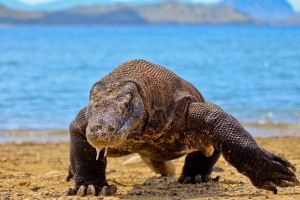
The Komodo dragon or Komodo monitor is a huge lizard that inhabits the Indonesian islands.
It is the largest species of lizard and can grow to be 10 feet in length and weigh up to 150 lbs.
They hunt and ambush snakes, birds and smaller mammals and deer and will eat carrion. It is claimed by some scientists that they have a venomous bite, but others do not agree.
They have a tail as long as its body, serrated teeth, and an armour-like skin. It has a long, yellow forked tongue.
Learn More About Komodo Dragon
Lake whitefish

Lake whitefish are freshwater fish that can be found throughout Canada including all the Great Lakes and the northern United States.
They are sometimes called a ‘humpback’ because of its small head and large body. It is a valuable commercial fish and a favourite of sports fishermen.
A good time to fish for them is late June and July as they come to the surface after mayflies and midges.
Learn More About Lake whitefish

Leopards can be found in Africa, Western & Central Asia, parts of Russia, India, and East Asia. It is known for its hunting ability and strength. It can run up to speeds of 36 mph.
The spots on a leopard provide it with excellent camouflage.
There are 3 kinds of spots – round rosettes in East Africa, more squarish in South Africa, and larger in Asia. Spots are unique to each individual.
They all have white underbellies.

Lizards are carnivorous reptiles and can be found on all continents and islands except Antarctica. Most lizards have 4 legs but there are some that are legless.
The skin of a lizard is covered with scales made of keratin. Lizards have various ways to protect themselves.
Some use venom, some use camouflage, some have reflex bleeding, and some sacrifice their tails and are able to regrow them.
They sit and wait motionless until a prey comes close enough to attack.

The ostrich is part of a group of flightless birds called ratites. The emus, rhea, cassowary, and kiwi are part of this group.
They lay the largest egg of any land animal. It has enormous legs and upper leg muscles and it can run at 43 mph, which makes it the fastest birds on land.
Ostriches are farmed all over the world for meat, leather made from the skins, and feathers used as decoration.

Owls can be found in all regions of the globe except the polar ice caps. They are solitary, nocturnal birds of prey.
The have binocular vision, binaural hearing, talons, and feathers that allow them silent flight. Owls have forward facing faces with large eyes that do not move, and a hawk-like beak.
They have 14 neck vertebrae which allows them to turn their heads up to 270 degrees. They hunt small mammals, other birds, and insects.

The panda is normally referred to the ‘giant panda’ to distinguish it from the red panda. The giant panda is a native of south-central China.
It has black fur on its ears, eye patches, muzzle, legs, arms and shoulders. The rest of its body is white.
The majority of its diet is bamboo shoots and bamboo leaves. In the wild, they will eat other grasses and tubers, and even birds and rodents.
An adult male can weigh up to 35o lbs. while an adult female may weigh half that amount.
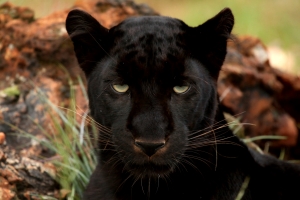
The panther is a member of a group of wild cats that include leopards, jaguars, and cougars. The name used depends on the region the cat is found.
There are panthers in Florida that are brown and others in densely forested parts of India, Java, Africa and Indochina that are black.
They are secretive and solitary hunters. Their prey is most often deer and other members of the deer family.
They prefer to live in dense underbrush or rocky areas where they can stalk their prey.

Penguins are flightless birds that live half their lives in the sea and half their lives on land.
Their wings have evolved into flippers which the use for swimming and to help them stay upright when walking on land or ice.
Almost all penguins are native to areas in the southern hemisphere except one species that live near the Equator, that being the Galapagos penguin.
Penguins feed on krill, fish, squid and other sea creatures.

Piranhas live naturally only in the Amazon River. They have jaws that are lined with a row of saw-like teeth that interlock and are razor sharp, much like a shark.
They are not always meat eaters, but will eat whatever they can get including vegetation, seeds, carrion and worms.
Some species are entirely vegetarian. The largest piranhas can be 2 feet in length.

Polar bears are native to areas within the Arctic Circle. It is a carnivore and hunts for seals and fish in the ocean.
An adult male (boar) can weigh up to 1500 lbs. and an adult female (sow) will weigh about half that amount.
The brown bear is a related cousin and lives in the lower regions. Because of changes in the climate and global warming, the two species have been forced to live closer together.

Porcupines are rodents that have a coat of sharp spines or quills. They are among the largest rodents in the world which includes the capybara and the beaver.
The North American porcupine is herbivorous. In winter it will climb trees and eat bark.
The African porcupine is mostly nocturnal and does not climb and eats roots, berries and farmers’ crops.
These porcupines have become pests and are considered a delicacy in Kenya.

Pythons are non-venomous constrictor snakes that are native to Africa, Asia, Australia and neighbouring islands.
However, the Burmese python was introduced to the everglades of Florida and have become so pervasive.
They do not have any natural enemies and they have almost decimated many indigenous birds, reptiles and mammals.
The government of Florida has issued a bounty on Burmese pythons to try to control the population.

Porifera are sponges and are different from other animals because they lack cell walls, tissues, and organs.
The shapes of their bodies adapt to the water that flows through them. They attach themselves to an underwater surface and stay in place.
There are some freshwater species but most are found in salt-water seas and oceans. There are a few sponges that have evolved into carnivores because they are in food-poor environments.
These feed on small crustaceans.

There are about 36 species of rattlesnakes. Rattlesnakes are native to the Americas and can be found from southern British Columbia, Alberta, Saskatchewan in Canada all the way south to Argentina.
They are venomous and warn of attack by vibrating their rattle at the end of their tails.
Most species prefer to live in rocky areas where they can easily find rodents, lizards, and insects.
However, they can also be found in the prairies, marshes, deserts and forests.

Scorpions are members of the arachnid family. They have 8 legs and a pair of pincers they use to hold and kill their prey.
They have a segmented tail ending in a stinger that is carried curving over their backs.
They usually can be found in desert areas of any continent except Antarctica. Scorpions prey on insects and other invertebrates.
The young are born live and live on the female parent’s back until their exoskeletons have hardened.

Seals are marine mammal that live half the time near or on shore and the other half in the ocean.
The true seal is earless and there are 2 species: harbour seals and the northern elephant seal. Harbour seals are common and can be seen on rocks and beaches near the ocean.
They can often be seen bobbing in the waves. They come in a variety of colours from white to mottled grey or brown. Elephant seals are tan. The male has a long proboscis.

Sharks differs from other fish because their skeletons are made of cartilage and connective tissue and not bones.
They have multiple rows of teeth that are replaced constantly one at a time and not as an entire row.
They have 5 to 7 gill slits on each side of the head and pectoral fins that are not fused to the head. There are more than 500 species of shark and range from 6 inches long to 40 feet long.
Sharks are found in all seas and oceans.

Skunks are mammals that are found in North and South America. They are related to weasels.
As a means of discouraging predators, they can spray a strong, pungent liquid. Some skunk species are black and white, brown and white or ginger and white.
The most common is black with a white stripe down its back and tail or two thin stripes or a series of white spots or broken stripes.
Skunks are omnivorous – they eat plants, berries, roots, leaves and small animals, such as lizards, frogs, snakes, moles, birds, and insects.

Snakes are elongated and legless. They are cold-blooded carnivorous reptiles.
Snakes can be found on every continent except Antarctica, on most small land masses except Ireland, Iceland, the Hawaiian archipelago and the islands of New Zealand.
There are many species that live in the ocean.
Many species have several joints in their jaws which enable the to swallow their prey whole. Most species are nonvenomous.
However, some species have venom that will cause paralysis or death to a human. Nonvenomous snakes either swallow their prey whole or kill be constriction.
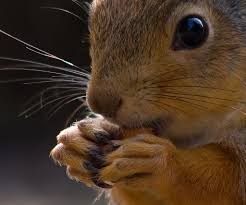
The family of squirrels include tree squirrels, groundhogs, chipmunks, marmots, flying squirrels, and prairie dogs.
They are indigenous to the Americas, Eurasia, and Africa and were introduced to Australia.
Their hind legs are longer than the front limbs and they have either 4 or 5 toes on each paw. The have strong claws for grasping and climbing.
Squirrels are found in almost every kind of habitat except the polar regions and true deserts. They are mostly herbivorous but many will eat insects.

Swans are closely related to geese and ducks and are among the largest flying birds. The mute, trumpeter and whooper swan can weigh more than 33 lbs. with a wingspan of 10 feet or more.
Pairs usually mate for life. Adult swans have a patch of skin without feathers between the eyes and both sexes have a lump of skin at the base of the bill called a knob.
The legs of a swan are usually blackish grey, except for the South American black-necked swan that have pink legs.

Swordfish are migratory, predatory fish. They have a long, flat, and pointed bill. They have round bodies with a sail-like fin along their back.
They are widely found in tropical and temperate areas of the Atlantic, Pacific, and Indian oceans. They can reach almost 10 feet in length.
Swordfish have special organs next to their eyes that provide heat to their eyes and brain. This specialty allows them to have terrific vision and improves their ability to catch their prey.
Of all the 25,000 species of fish in the world, only 22 are known to have this heat organ – this includes swordfish, marlin, tuna and some sharks.

A tarantula is a hairy arachnid (spider) and, like all spiders, has eight jointed legs. They are burrowers and live in the ground.
A tarantula’s body is in two parts connected by a thin tissue that allows it to have a wide range of motion. They can be as small as a pea and as large as a dinner plate, depending on the species.
Most North American tarantulas are brown, but some in other parts of the world are blue, white stripes, orange abdomens, and/or yellow markings on the legs.

A large member of the wild cat family, a tiger is noticed for its dark vertical stripes on orange-brown fur of the body, legs, and face.
They are predators that prey on deer and other land mammals. The tiger is territorial. Cubs will stay with their mother for up to two years.
Over the last 200 years, tigers have lost their natural territorial range and are now found mostly in Siberia’s forests and tropical forests of India and Sumatra.

Toucans are brightly coloured and have overly large and colourful bills. They are native to the tropics from Mexico to Central and South America.
There is a mountain species that live in high altitudes in the treeline of the Andes.
Toucans are forest dwellers for the most part. They nest in the hollows of trees made by other birds.
When the young hatch, they are naked and without down (a fluffy substance on their bodies). Toucans do not migrate and can usually be found in pairs or small flocks.

Turtles are cold-blooded reptiles. They have an outer shell that is not bone but made of keratin, like our fingernails.
Many live in and around water most of the time but they breathe air, and lay their eggs on land.
They are divided into two groups depending on how they retract their necks – some retract their heads to the side and some retract their necks straight back.
The cervical column has 9 joints and 8 vertebrae that are not fused. This makes their necks more flexible so they can reach out to catch prey.

The white tiger is a colour variation of the Bengal or Siberian tiger. They can be found in the wild in India.
These tigers have black vertical stripes on a white or almost white coat. Like all tigers, the stripes are like fingerprints – each tiger’s pattern is unique.
For a white tiger to be born, both parents must carry the unusual gene for white fur. They are carnivorous hunters and will stalk and kill other mammals of any size.

The wolf is a large canine that is native to North America and Eurasia. Adult males average 88 lbs. and females average l82 lbs.
The wolf is a close relative of the coyote and golden jackal. Most wolves are mottled white, brown, grey, and black.
There is a subspecies in the Arctic that are almost all white. Wolves live in packs and are carnivores.
They almost never hunt alone but will gang up on hooved mammals, livestock, and other smaller animals.

Zebras are native to Africa and can be found in the savannahs, grasslands, and even some mountainous areas. They are grazers and are preyed on by lions and cougars.
Their closest relatives are horses and asses. Each zebra’s stripes are unique to that individual.
Plains and mountain zebra live in social groups called harems that have one adult male. The harem will consist of a number of adult females and young foals.
They communicate by different vocal sounds, body postures, and facial expressions.
Insect Facts
Learn all about some fascinating insects.

Bees are insects that fly and are closely related to wasps and ants. They are essential for pollinating plants, and they collect nectar to produce honey.
There are more than 16,000 species of bees. Most species live in colonies with one queen bee.
Bees can be found on every continent except Antarctica.
They range in size from the tiny stingless bee at .08 in. long to largest leafcutter bee at 1.5 inches long.

Beetles are insects that have evolved so that their front pair of wings have hardened to form wing cases. There are about 400,000 species in the world.
They can be found in almost every habitat except the sea and the polar regions. Beetles feed on plants, fungi, plant debris and eat other invertebrates.
Some species have become serious pests to agriculture, such as the potato beetle.
Others are helpful, such as the ladybugs which eat aphids and other insects that destroy crops.

Butterflies develop in four stages: egg, larvae, pupa, and adult.
The changes from pupa to adult is called metamorphosis, which is a complete change in every aspect of the insect inside the chrysalis (pupa covering).
When the adult insect emerges, it sits until its wings have dried before it flies off.
Some larvae are helpful by eating insects, like the harvester caterpillar, and some are harmful pests because they damage crops.

Centipedes and Millipedes Facts
Centipedes and millipedes have many sections to its body. Each segment has one pair of legs.
Strangely, centipedes cannot have an even number of legs. The number of legs can be more than 300.
They are generally not colourful, except for the many that live in the tropics.
They can be found in a variety of environments, even in the arctic. They can be found in leaf litter, under dead branches and inside logs.
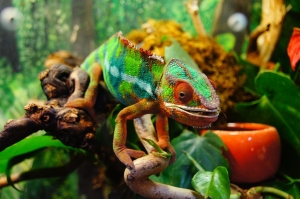
Chameleons are lizards. The way they walk has been described as swaying from side to side as they move forward. They have crests or horns on their brow and snout.
Chameleons’ eyes move independently of each other except both eyes will face forward when focusing on a prey. They are climbers and hunt prey.
Some species live in environments ranging from tropical rain forests to arid deserts. They come in a huge range of colours, and many species change colour according to their environment.

Dragonflies have large, compound eyes, two pairs of wings that are mostly transparent, and a long slender body. Some people confuse damselflies with dragonflies, but they are a separate species although related.
Many dragonflies have iridescent colours on their bodies. The larvae are aquatic and are called nymphs.
The nymph stage can last as long as 5 years while the adult stage last only weeks.
The adult dragonfly can fly like a helicopter, stopping in mid-air. Some have been known to fly great distances across bodies of water.

Insects are the largest group of arthropods (invertebrate animals). They have three parts to their body: head, thorax, and abdomen.
They have three pairs of legs that are attached to the thorax, compound eyes, and a pair of antennae.
There are more than a million species in the world. They can be found in almost all environments, including water.
Some species of insects undergo a 4-stage metamorphosis and other undergo a 3-stage metamorphosis.
Almost all insects hatch from eggs.
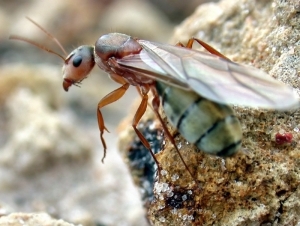
The queen ant is the only ant in an ant colony that lays eggs. She will be the mother of all the ants in the colony. Ants develop in four stages, egg, larva, pupa, and adult.
The larvae do not have legs and will only move their head when being fed. How the larvae are fed will determine how they will develop into adult ants.
During times when resources are scarce and the larvae receive less nourishment, more male and female worker ants will be produced.
When resources are plentiful, some larvae will receive excellent nourishment and develop into mature winged females that will leave the colony.
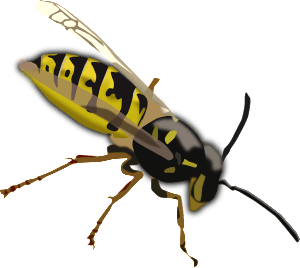
Wasps are not ants or bees although they share a common ancestor with bees. Wasps can be distinguished by a tiny ‘waist’ that connects the thorax to the abdomen.
Common wasps are yellowjackets and hornets. They generally live in a nest with a queen that lays eggs and workers wasps.
However, there are some species that do not live in nests and the adult female lives alone and lays its eggs near a food source for the larvae to use.
Some wasps are predators and sting their prey or use their stinger as a defence.
Brown Bears

Brown bear, also known as Ursus arctos is a type of a bear found in hilly and wooded locations around the globe. They avoid contact with people and are less violent.
In North America, they are also known as Grizzly bears or grizzlies. After the polar bear, the brown bear is the second-largest bear in this world
Black widow spiders

Black widow or Latrodectus is a genus of spiders which are commonly named as true widow. There are a total of 34 species of spider in this genus. These species spiders are smaller in size but carry strong venom with them which are harmful to humans.
Black Widow plays an important role in maintaining our ecosystem as it eats harmful insects to plants and vegetation.
Snails

Snails, being one of the slowest animals on this planet, can cover 1 kilometers in a week. There are different types of snails found throughout the world which occupy the spaces in land, sea and freshwater.
Over the geological time, snails have diversified so much that a snail with lungs can be found on freshwater and snails with gills can be found on land. Some of them are even found on the sea.
Worms

Worms also known as Annelida are one of the most important creatures in our ecosystem. Worms help in increasing soil aeration which helps the plants to grow faster.
worms are cold blooded animals that live in both land and water. They have a tube-like body and don’t have eyes in most of the cases.
Tarantulas
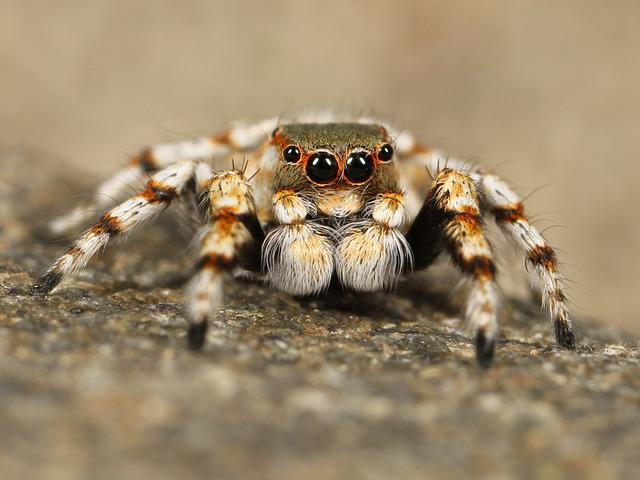
Tarantulas are the type of arachnids with 1010 different varieties at the moment. They are non-venomous and easy to identify due to their distinct look. People also keep them as pets.
Orb Weaver Spider
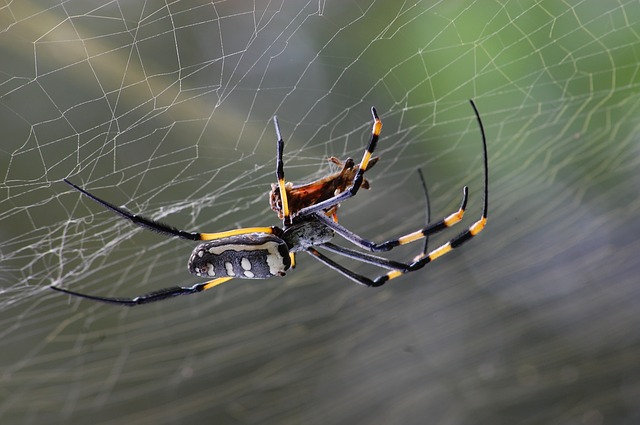
The Orb Weaver Spiders got its name from their orb-shaped webs. There are about 3000 species of this kind of spiders. They have variety of colors and have hairy or spiky legs.
We hope you loved our animal facts!
Which animal or insect is your favorite?
Now, why not explore our Science topics or some of the exciting and fun activities on our Blog?
Gorillas are the Kings of the Jungle




